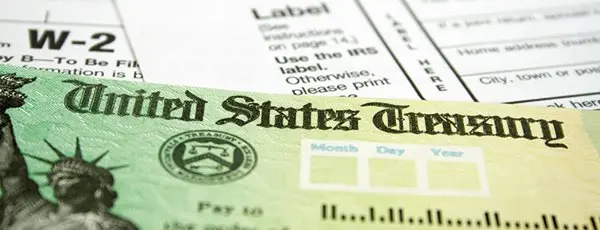5 Smart Ways to Spend Your 2020 Tax Refund

- Tax refunds create an opportunity to improve your financial health.
- Apply the 80/20 rule -- reserve 80% of your refund for financial goals, and 20% for fun.
- Financial goals include paying down debt and increasing your savings.
Table of Contents
In 2020, the tax season was extended to July 15 due to the coronavirus pandemic. Now that we’re coming up to that deadline, many Americans might be thinking about how to spend their tax refund. More than 10.8 million refunds have been issued so far this year, but that number could increase as last-minute tax filers submit their returns and collect their refunds.
This year, with so many out of work, the average tax refund of $1,952 could go a long way. If you’re expecting a refund this year and want to know a few ideas on how to use it, here are five smart options to consider.
1. Cushion your emergency fund
Experts say that in order to have a fully funded emergency fund, you need to have enough money to cover six months or more of living expenses. If you aren’t close to that amount, your tax refund could help get you there.
Even though it’s important to have cash set aside to help you weather tough times, many Americans have little saved. In fact, 23% of Americans say they regret not having enough in emergency savings during the coronavirus pandemic.
If a six-month emergency fund seems like too much to aim for, try setting a goal for an amount equal to two to three months of living expenses. Figure out how much your monthly living expenses are, including rent or mortgage payment, food, utilities, and necessary car expenses, then aim for saving that amount times at least 2-3 months’ worth. Setting aside your tax refund in a small emergency fund can help you cover basic living expenses in case of job loss or a medical emergency.
2. Pay down debt
If you have debt, especially high interest credit card debt, a tax refund could help you pay down the balance. In a Freedom Debt Relief survey, 47% of respondents said they carry credit card debt, with the average credit card interest rate at 16%.
In order to make headway on your debt, get organized. Use a spreadsheet or piece of paper to list out all of your debt, including outstanding balance, minimum payment, and interest rate. Then, reorder the debt according to the highest interest rate or lowest outstanding balance.
The idea here is that you can start to pay off the debt with the highest interest rate, known as the debt avalanche method, or pay off the smallest balance, known as the debt snowball method. In either scenario, take a look at your tax refund amount and see how it could impact your debt balance.
3. Invest in your retirement
Another way to use your tax refund is to invest in your retirement. Even if you regularly contribute to a 401(k), you could contribute the extra money through an individual retirement account or a brokerage account.
Use your tax refund to open a Roth IRA, which is a retirement account that offers tax-free growth and tax-free withdrawals. In order to qualify for a Roth IRA, you must make $139,000 or less as a single-income earner or $206,000 or less for couples.
Freedom Debt Relief found that 60% of American households save less than $1,000 per year for retirement. If you want to make a more comfortable retirement a reality, using extra income from a tax refund could be just the thing to make progress.
4. Apply the 80/20 rule
Whether you save, pay off debt or invest, you can apply the 80/20 rule with any extra income you receive. It’s especially helpful when it comes to tax refunds. The idea is to use 80% of your tax refund on a financial goal and 20% on something fun. This method combines discipline and indulgence, but the focus is still primarily on your larger financial goals. Some of these key goals might include:
Paying down high-interest debt
Paying off student loans
Building a down payment fund
Creating an emergency fund
Saving for a car
No matter how big or small your tax refund is, it can be rewarding to put the bulk of it towards a goal and reserve a small portion to spend on yourself.
5. Pay yourself the refund over time
Another creative way to spend your tax refund is to pay yourself small amounts of the refund over time. What’s unique about this idea is that it increases your regular monthly income so you have more money to cover your expenses. If you don’t have any immediate need for your full refund, then the extra monthly income could be a bonus to your budget.
For example, let’s say you get a $4,000 tax refund. Instead of spending it all on a certain goal or socking it all away, deposit it (or say, 80% of it!) into a separate savings account and pay yourself regular distributions into your checking account. You could pay yourself roughly $300 per month over the next 12 months with a $4,000 tax refund.
If you still don’t know what to do, here’s one more idea
Balancing a healthy savings amount, debt, investing, and how a tax refund affects those things can be a little daunting. Learn how to manage your debt in our free debt management guide. We included several strategies for managing debt plus ways to gain control over your financial future. Download the Debt Management Guide now.
Learn more:
Will We Get Another Stimulus Check? (Freedom Debt Relief)
Year-Round Tax Planning Strategies (Freedom Debt Relief)
With Tax Deadline Looming, IRS Faces Backlog As It Transitions Out Of COVID-19 Crisis (NPR)